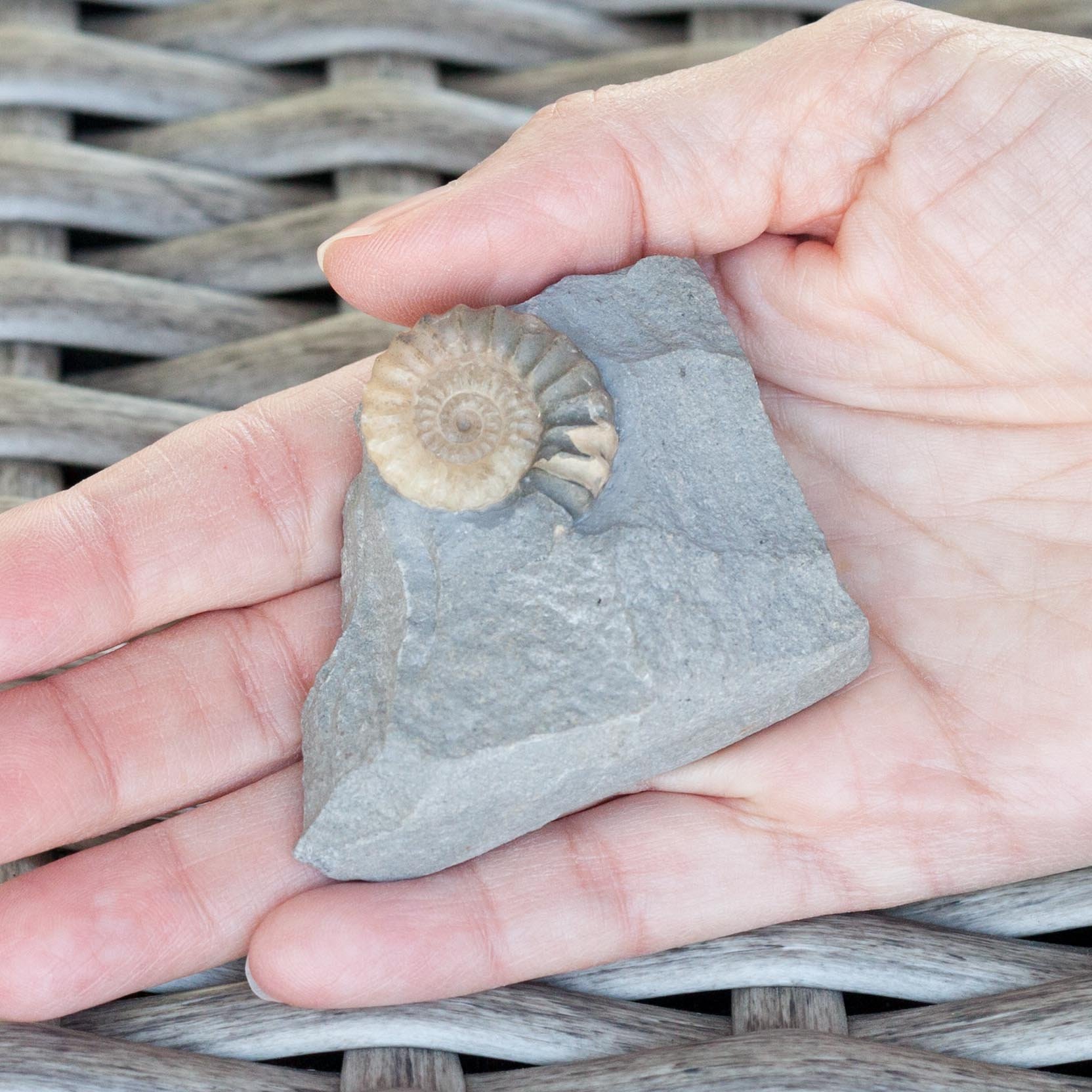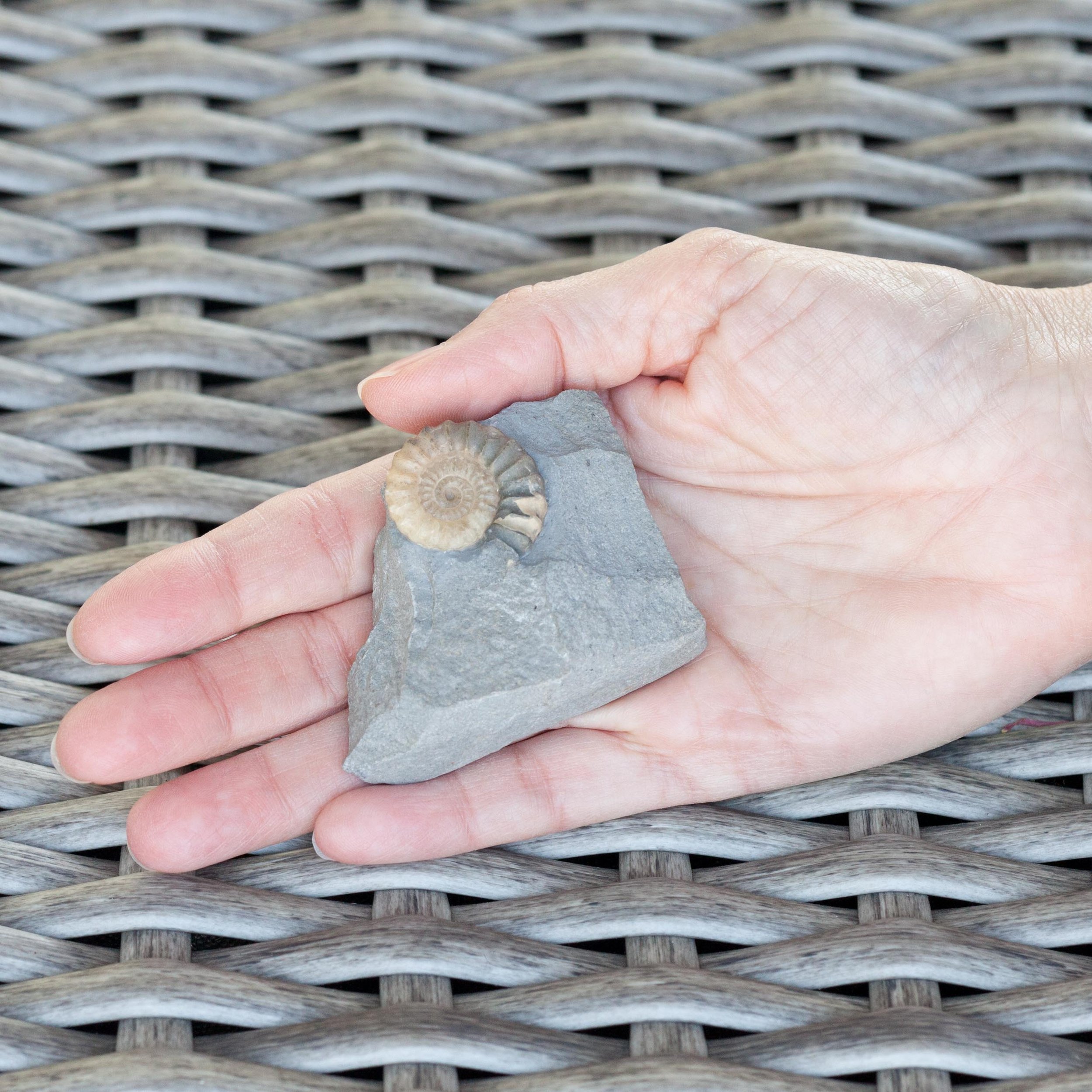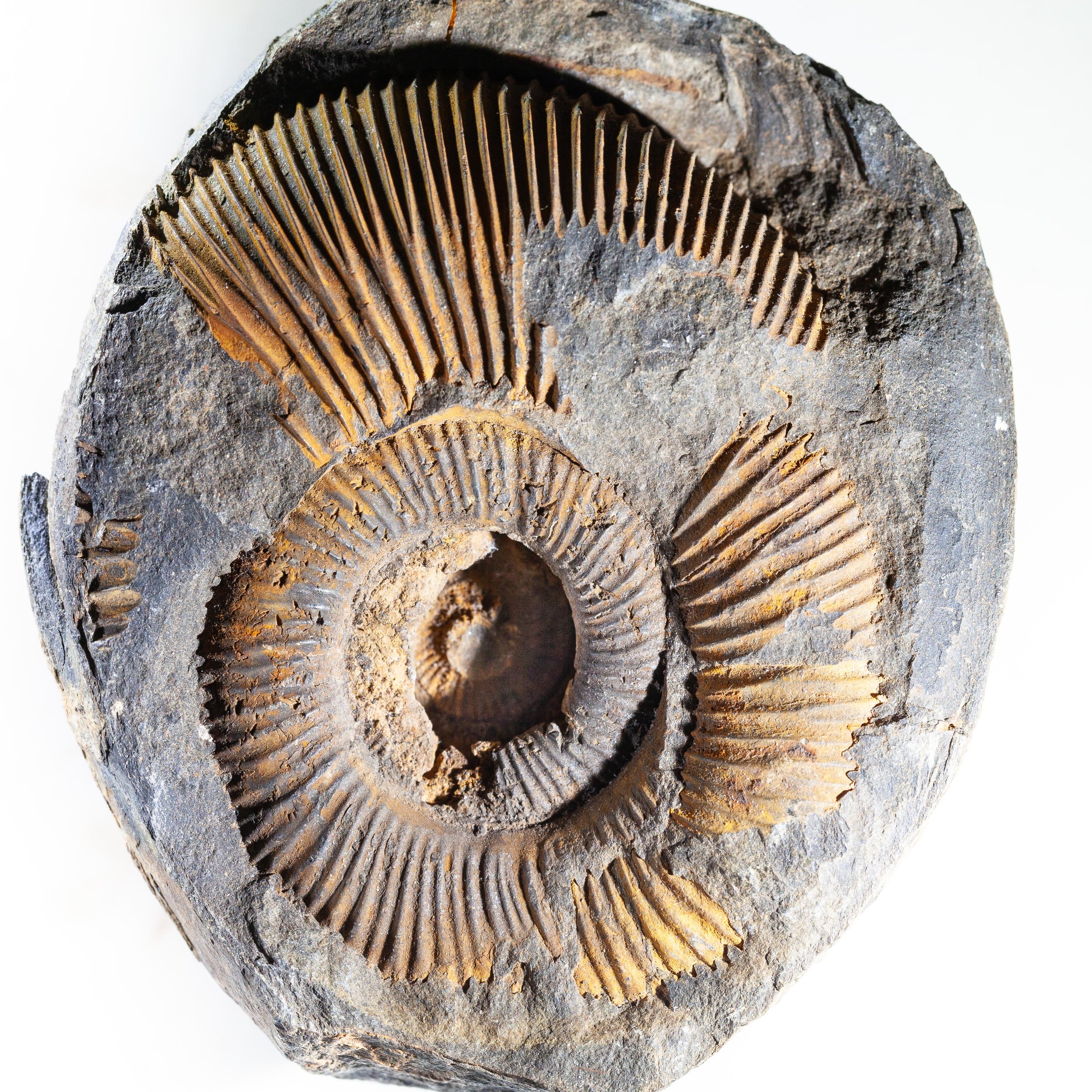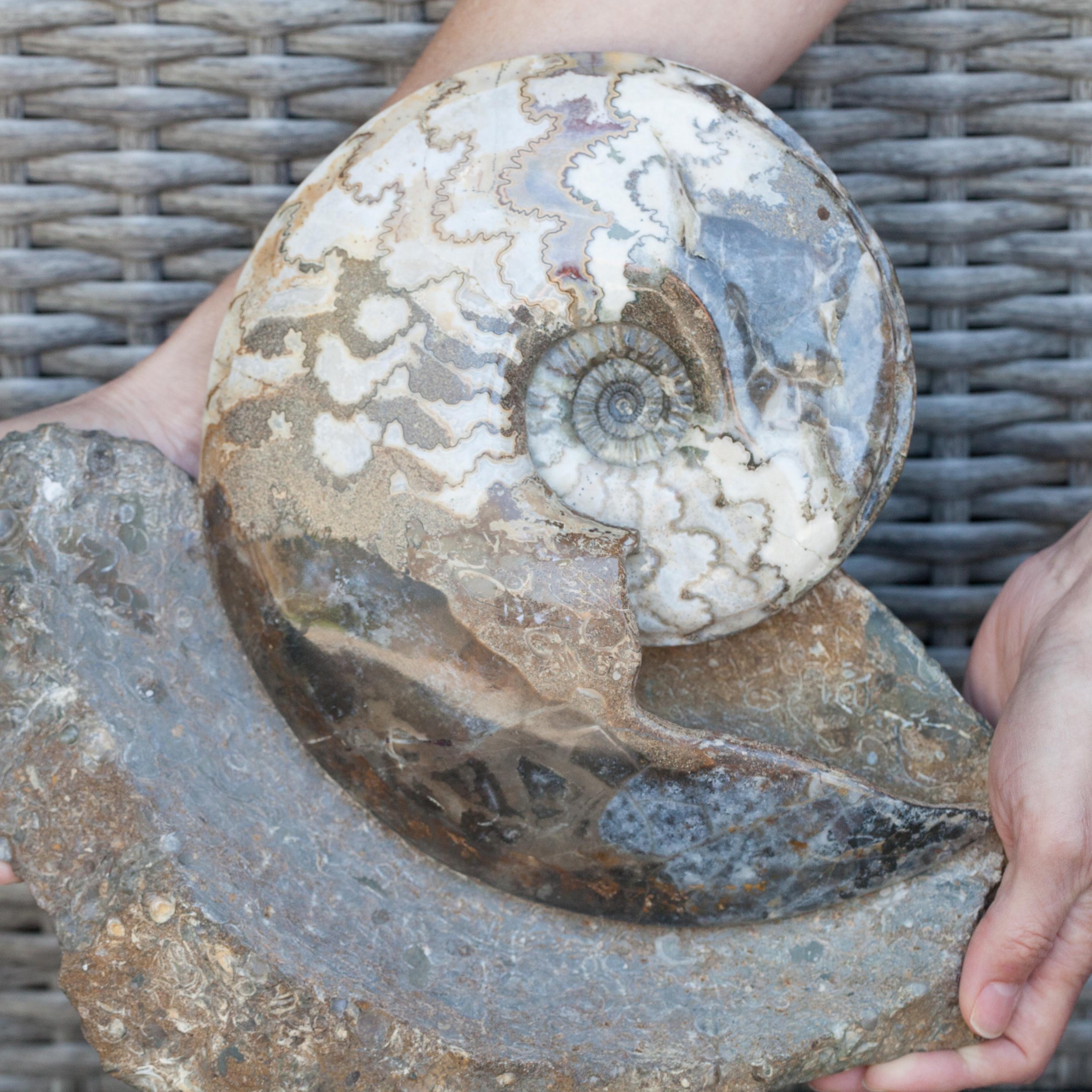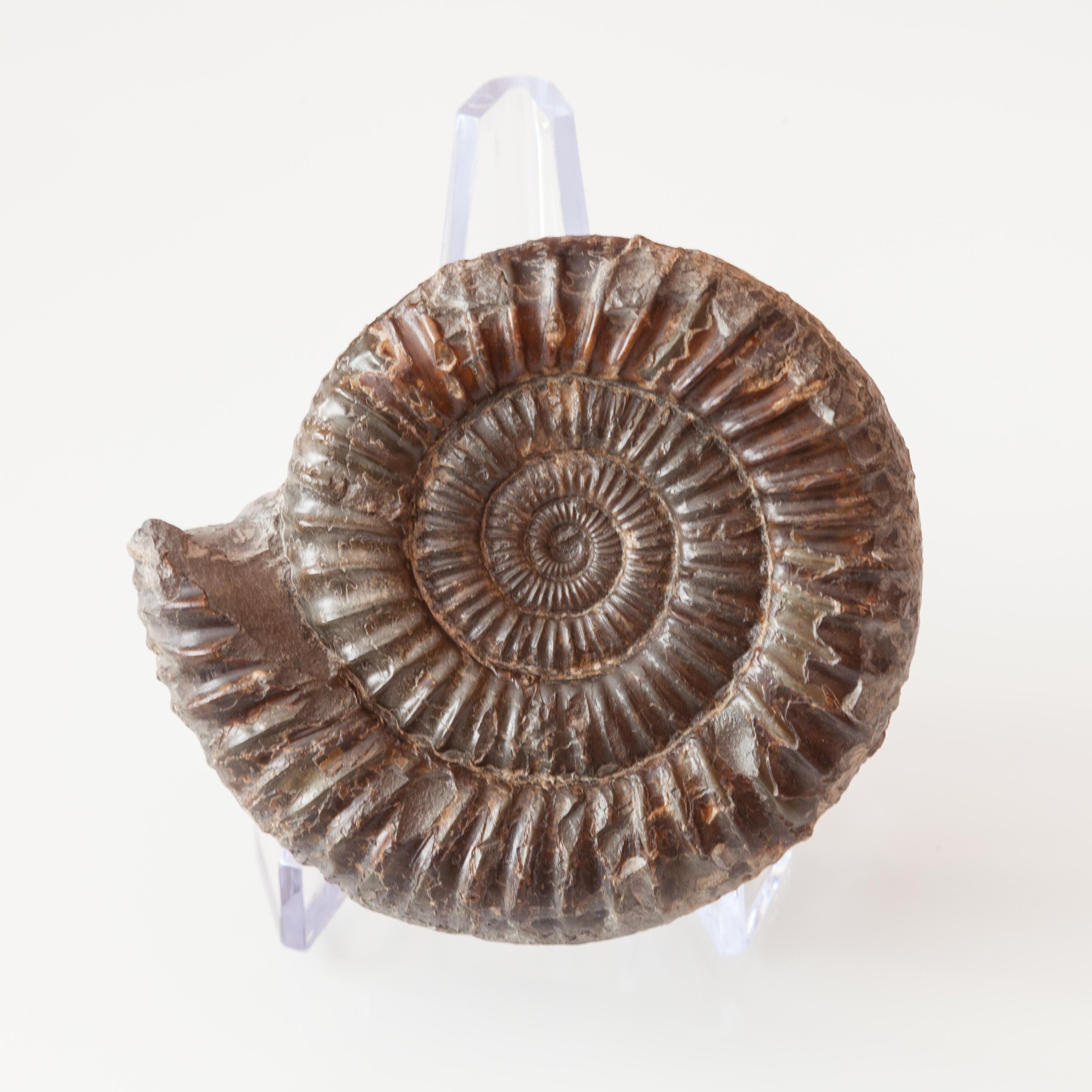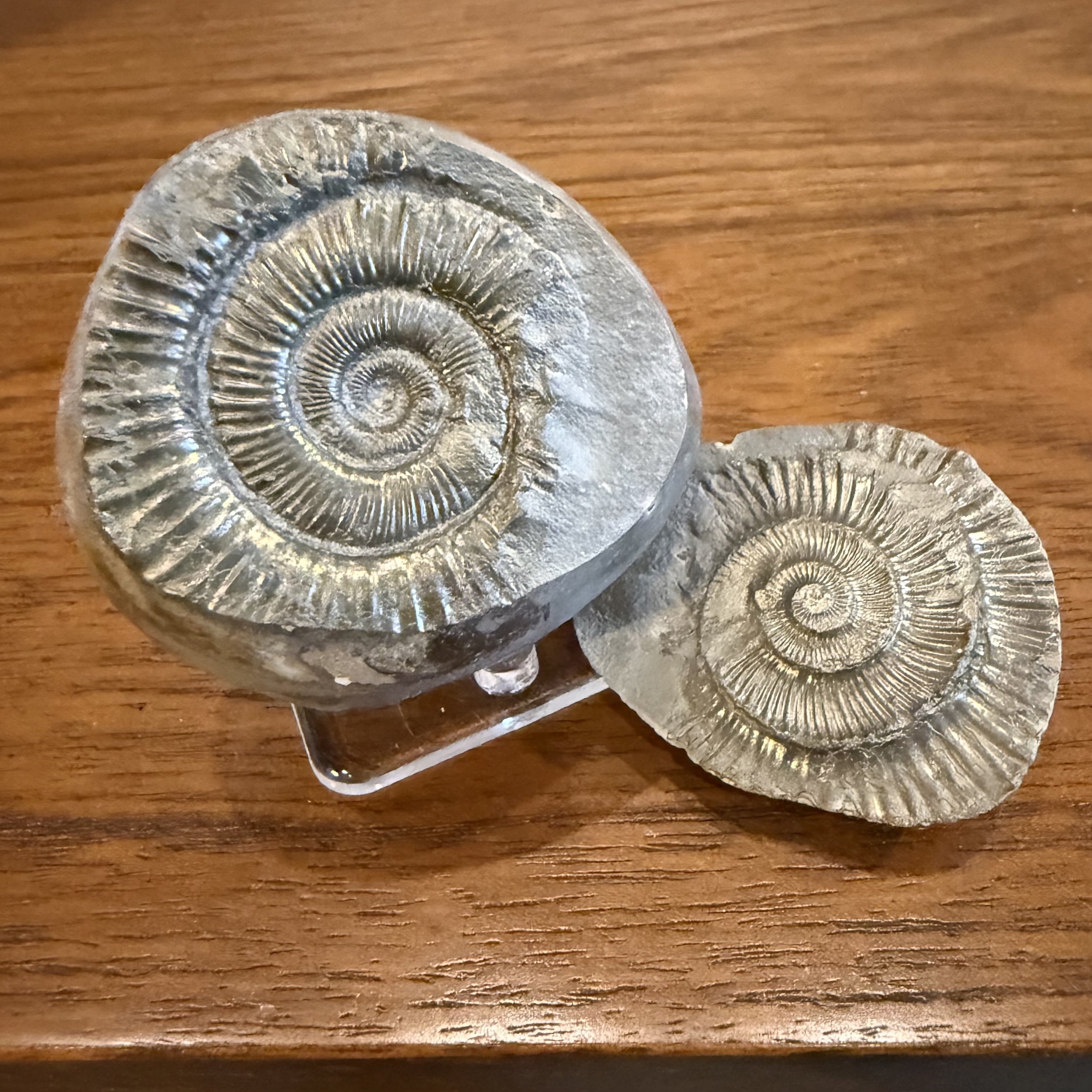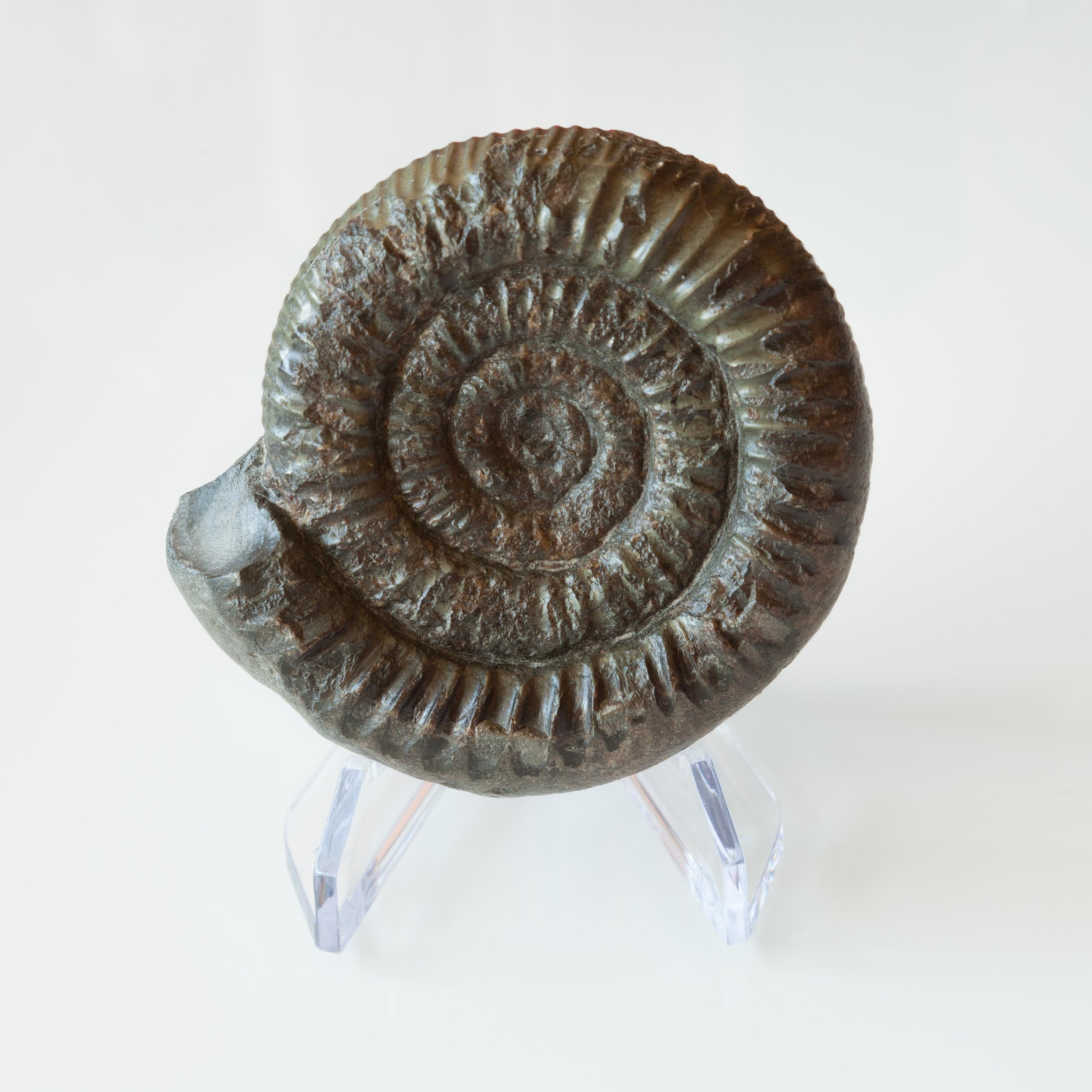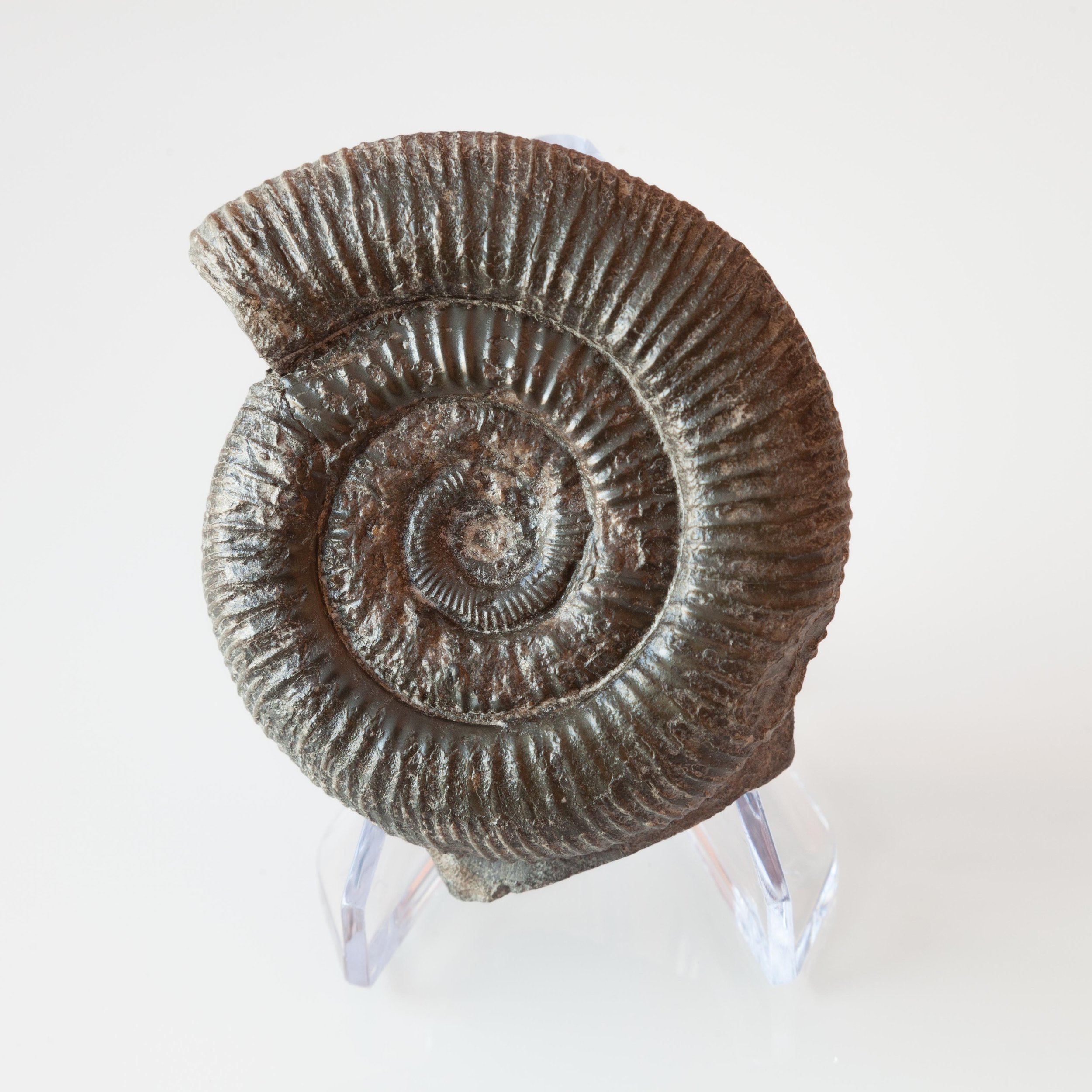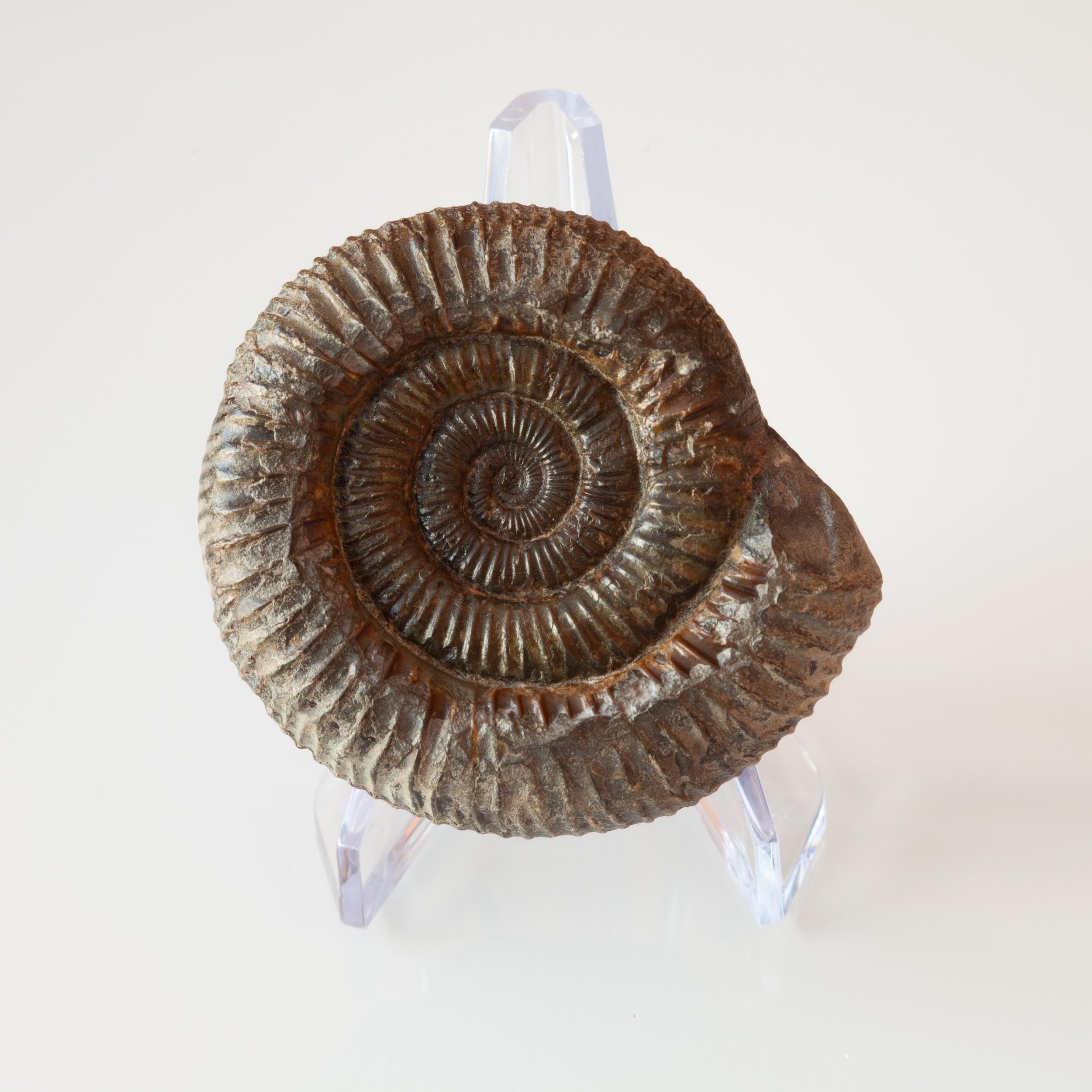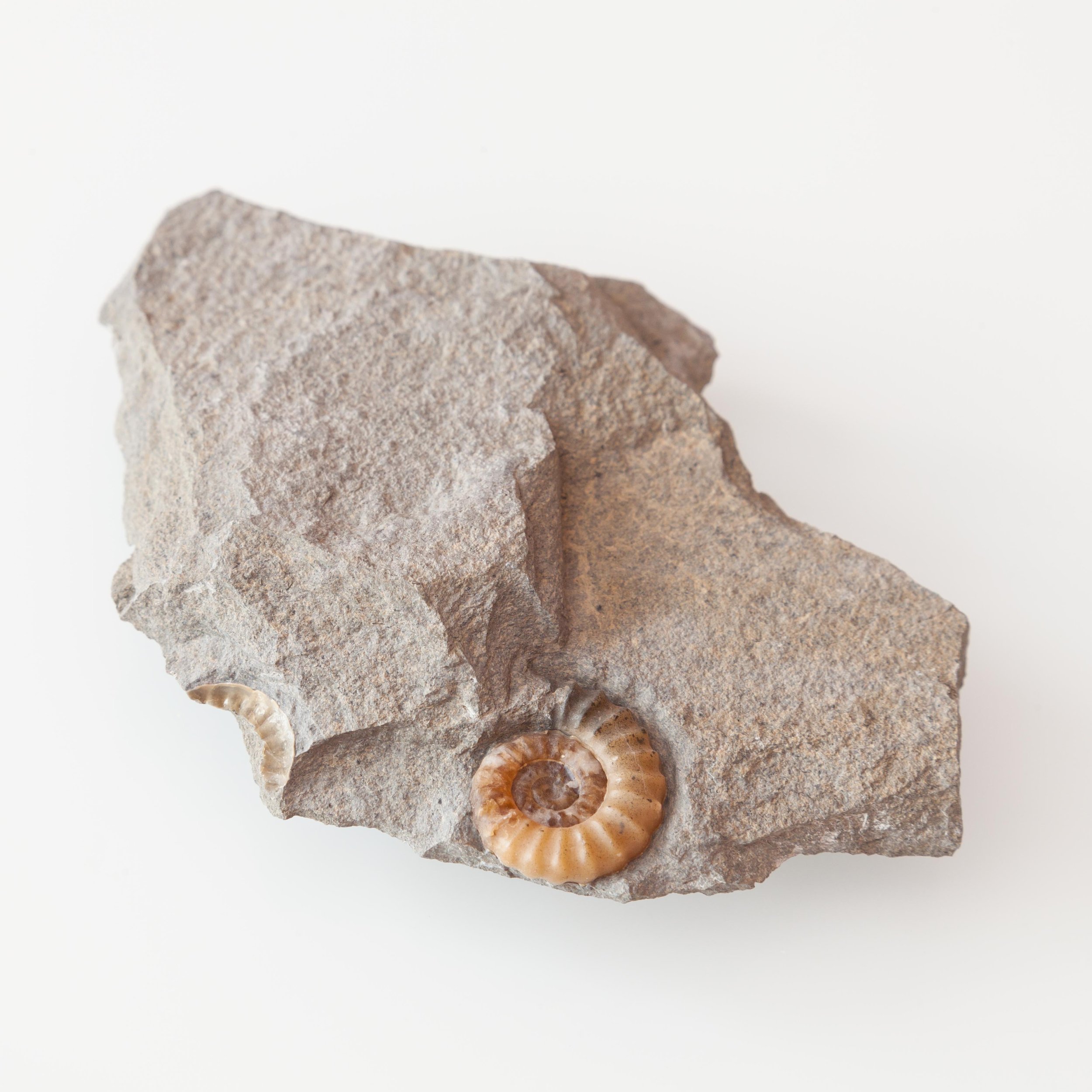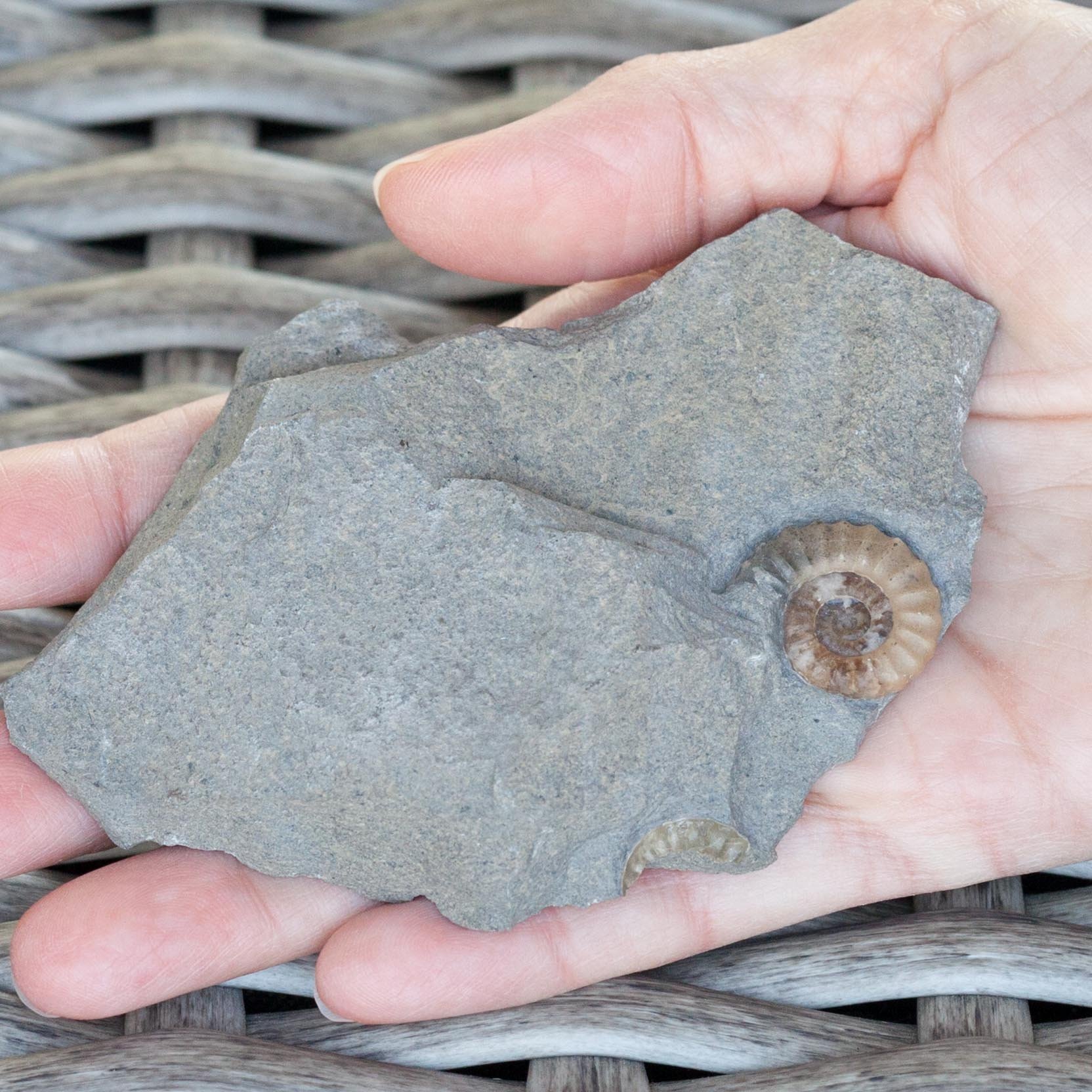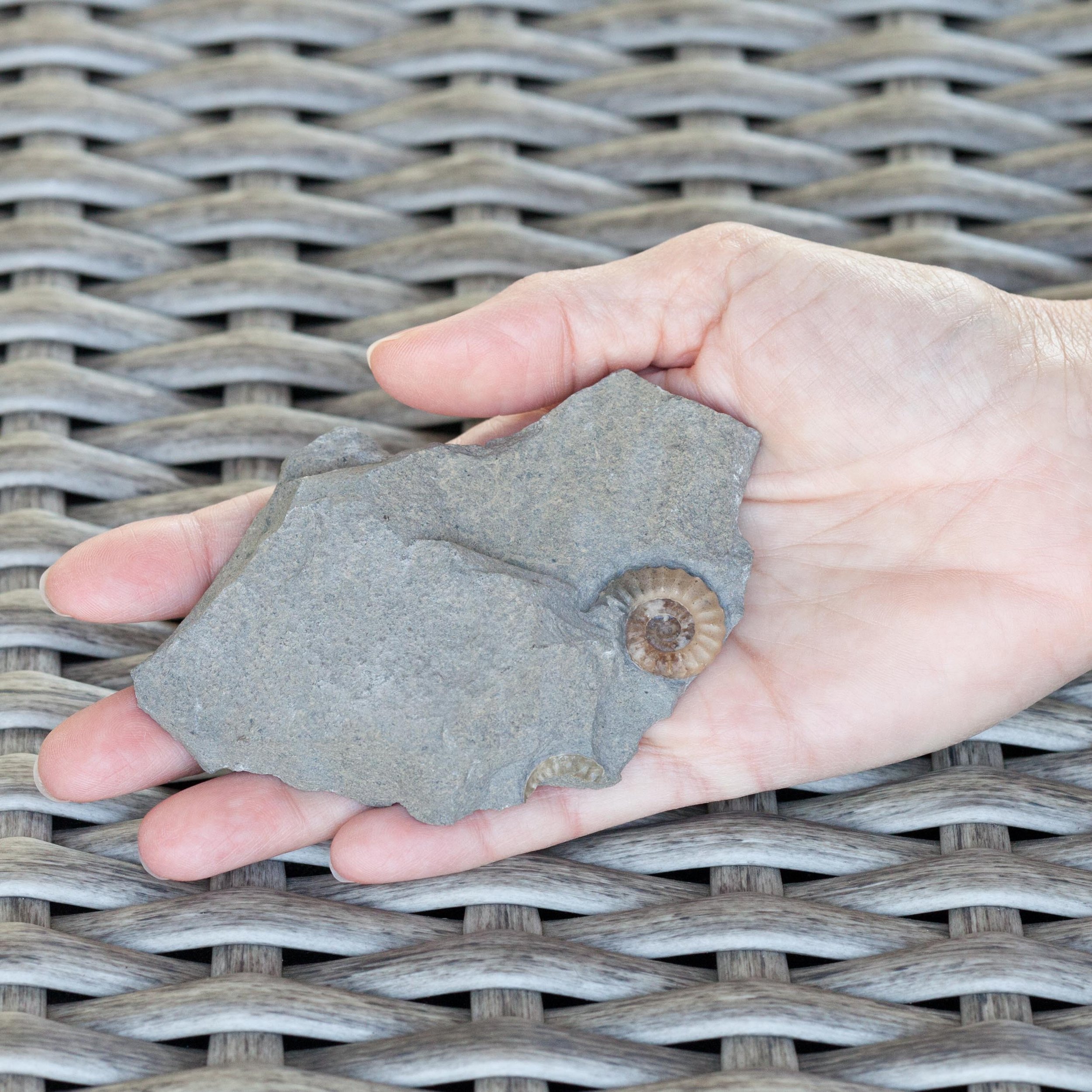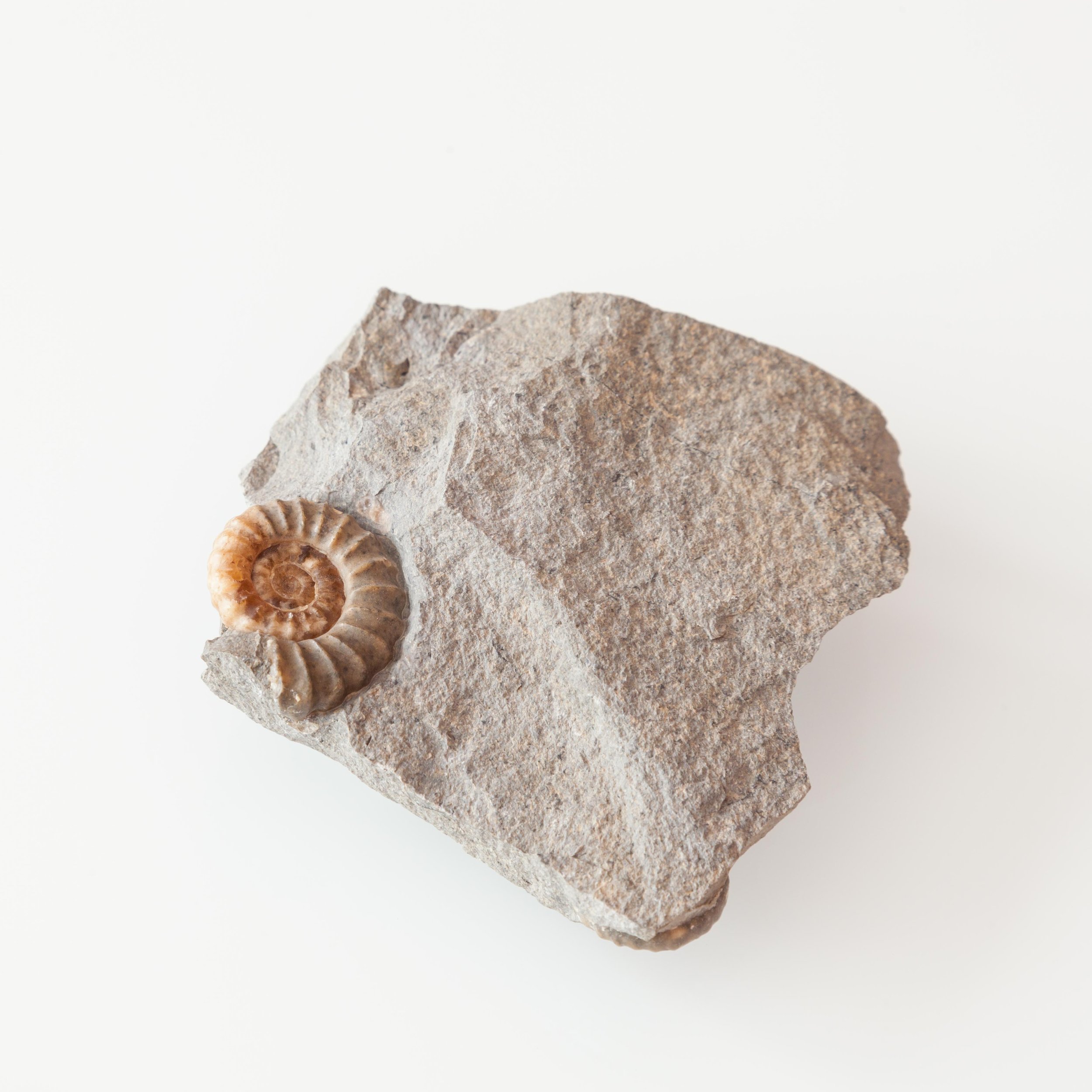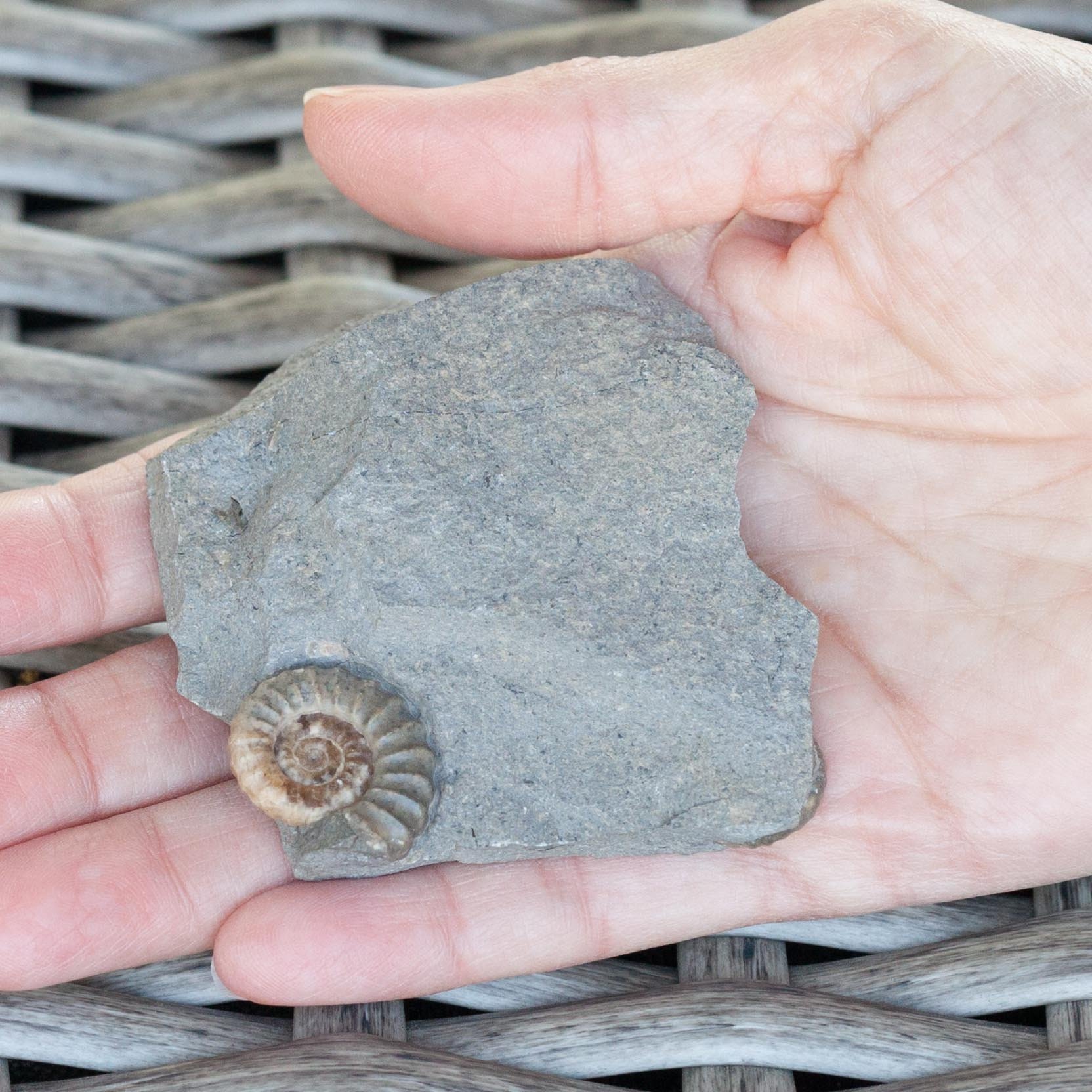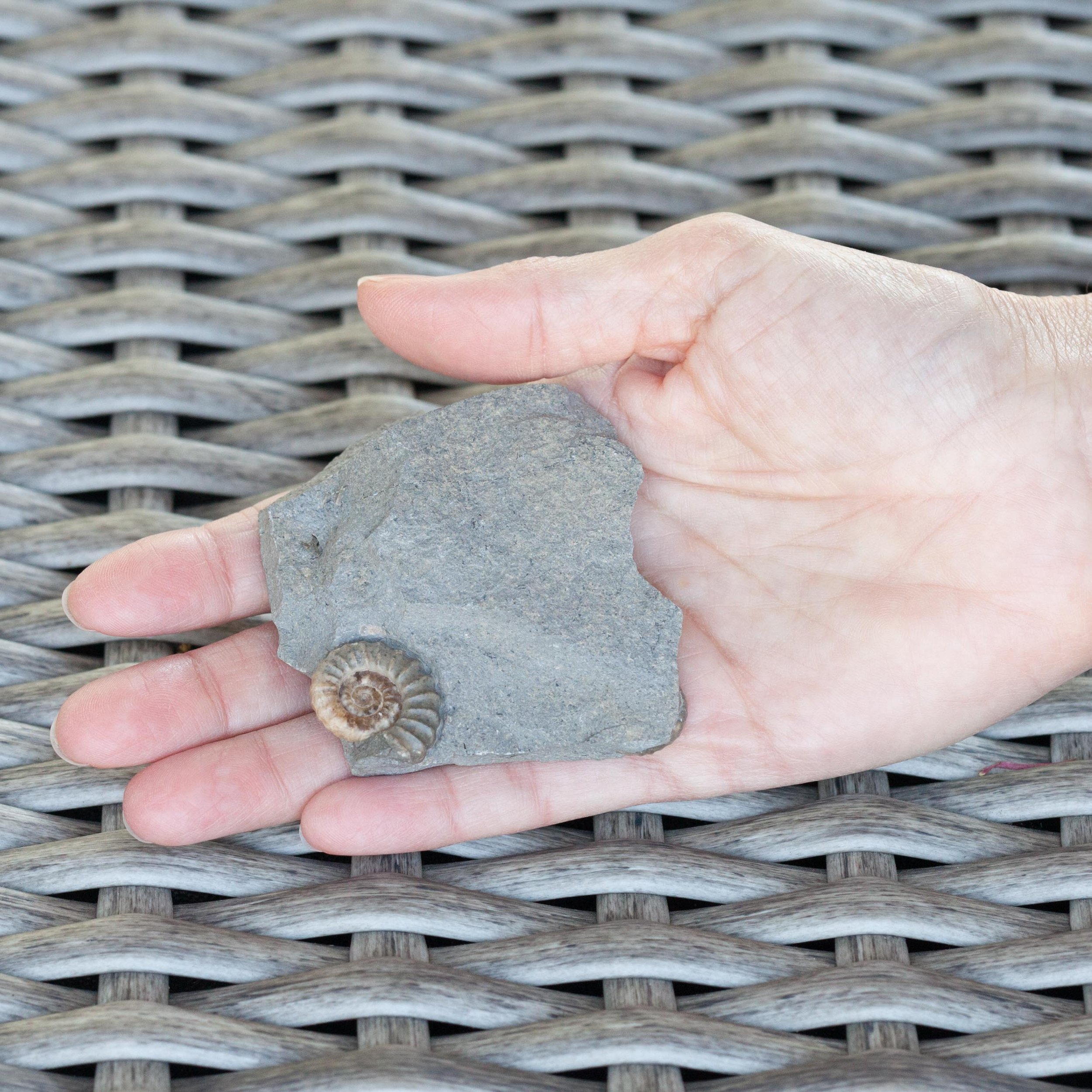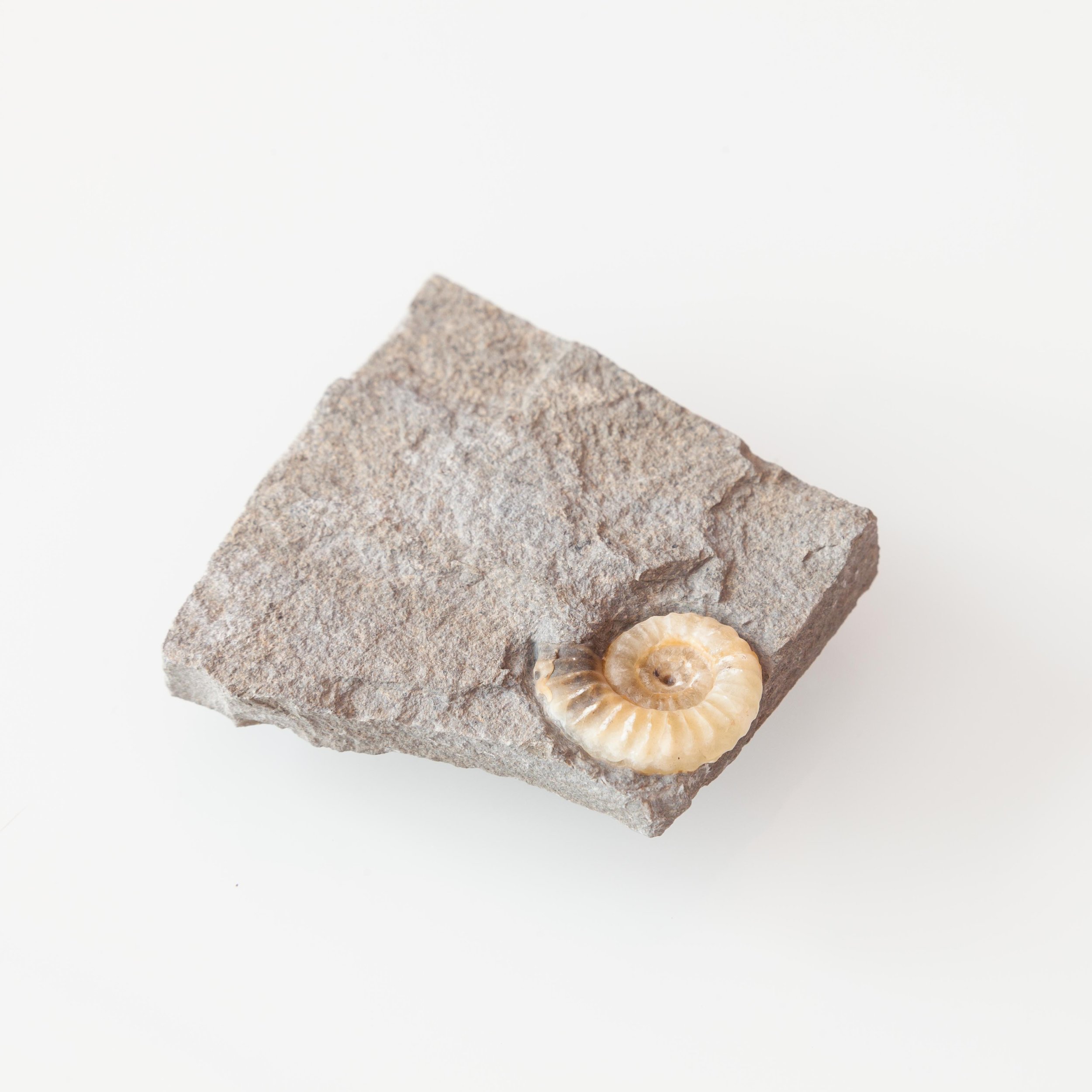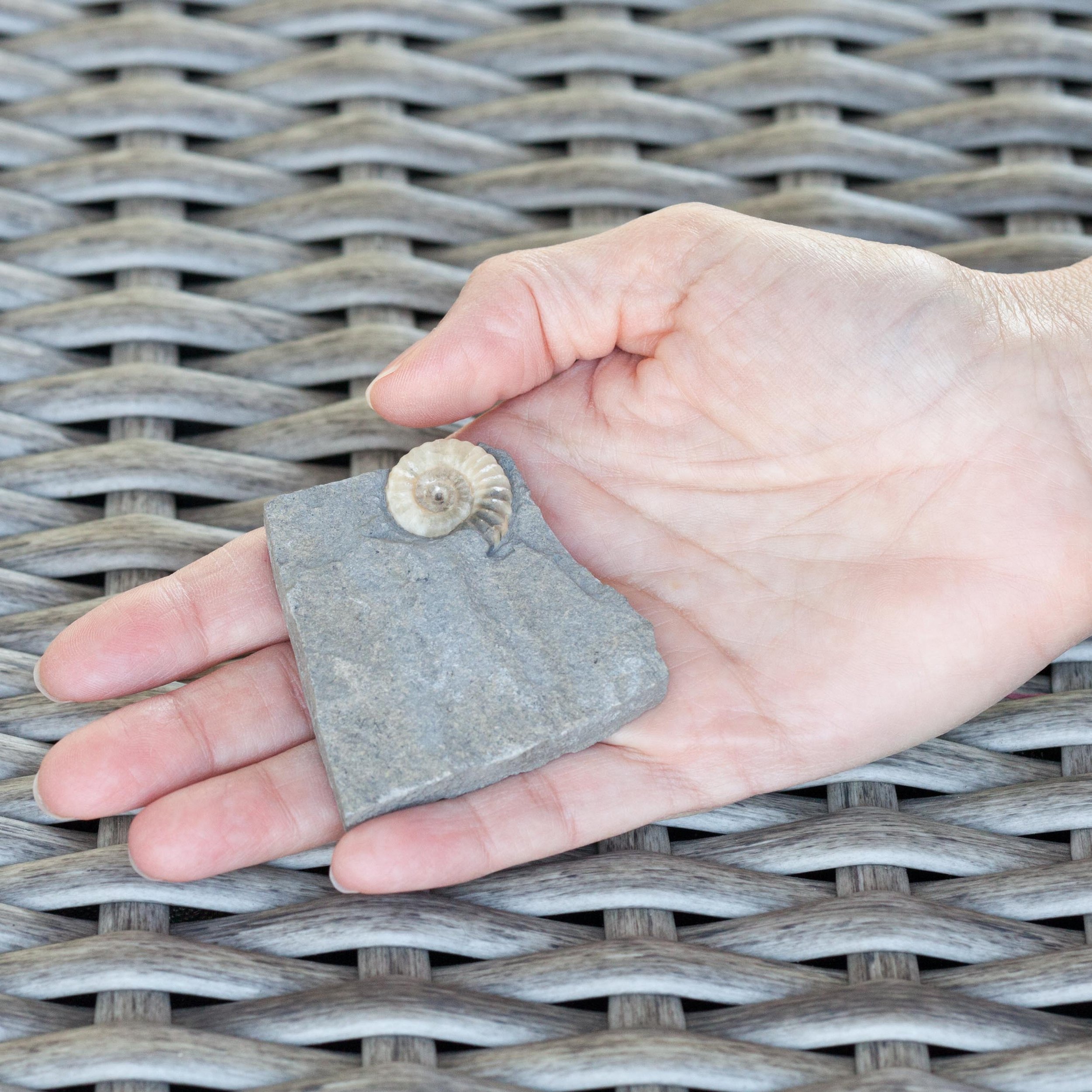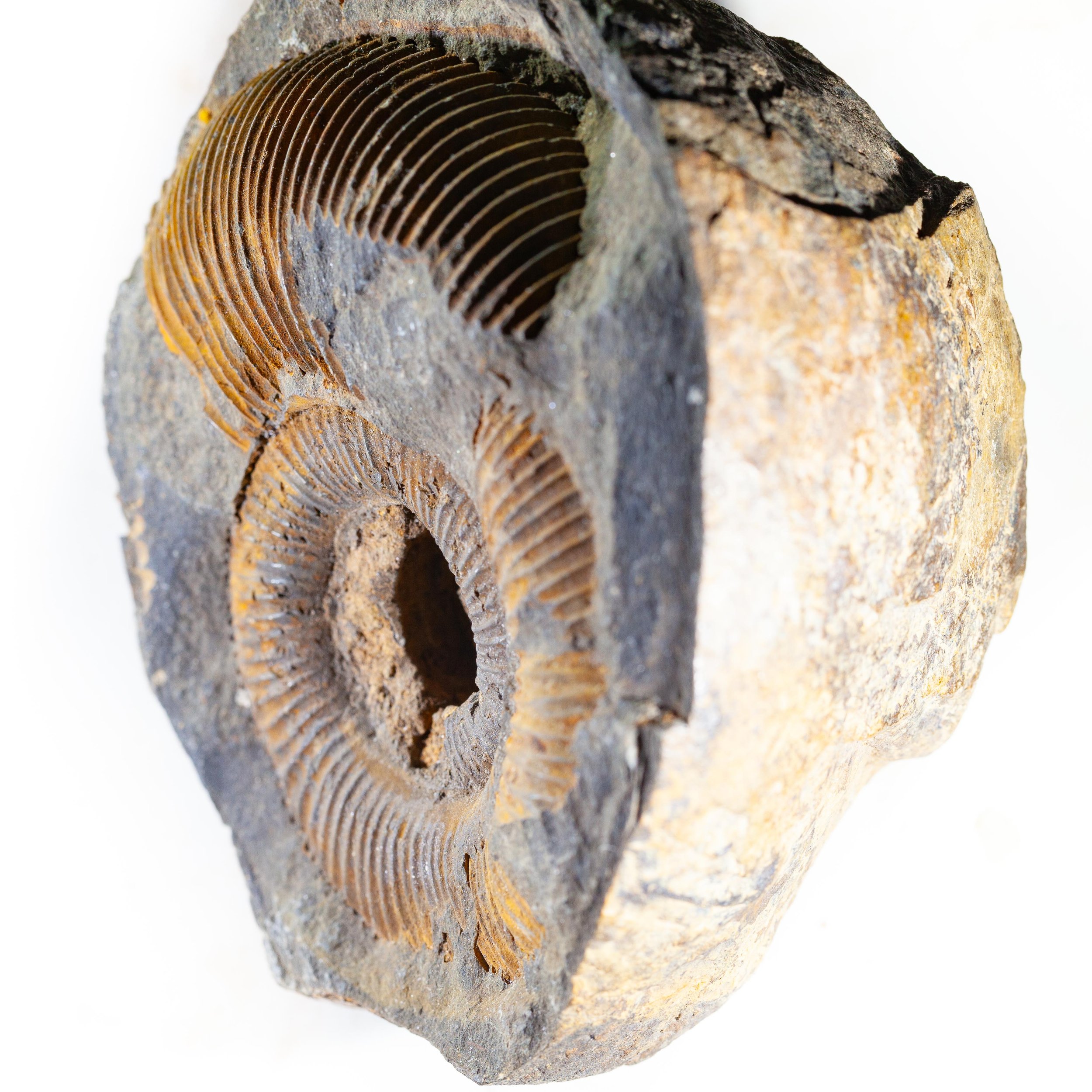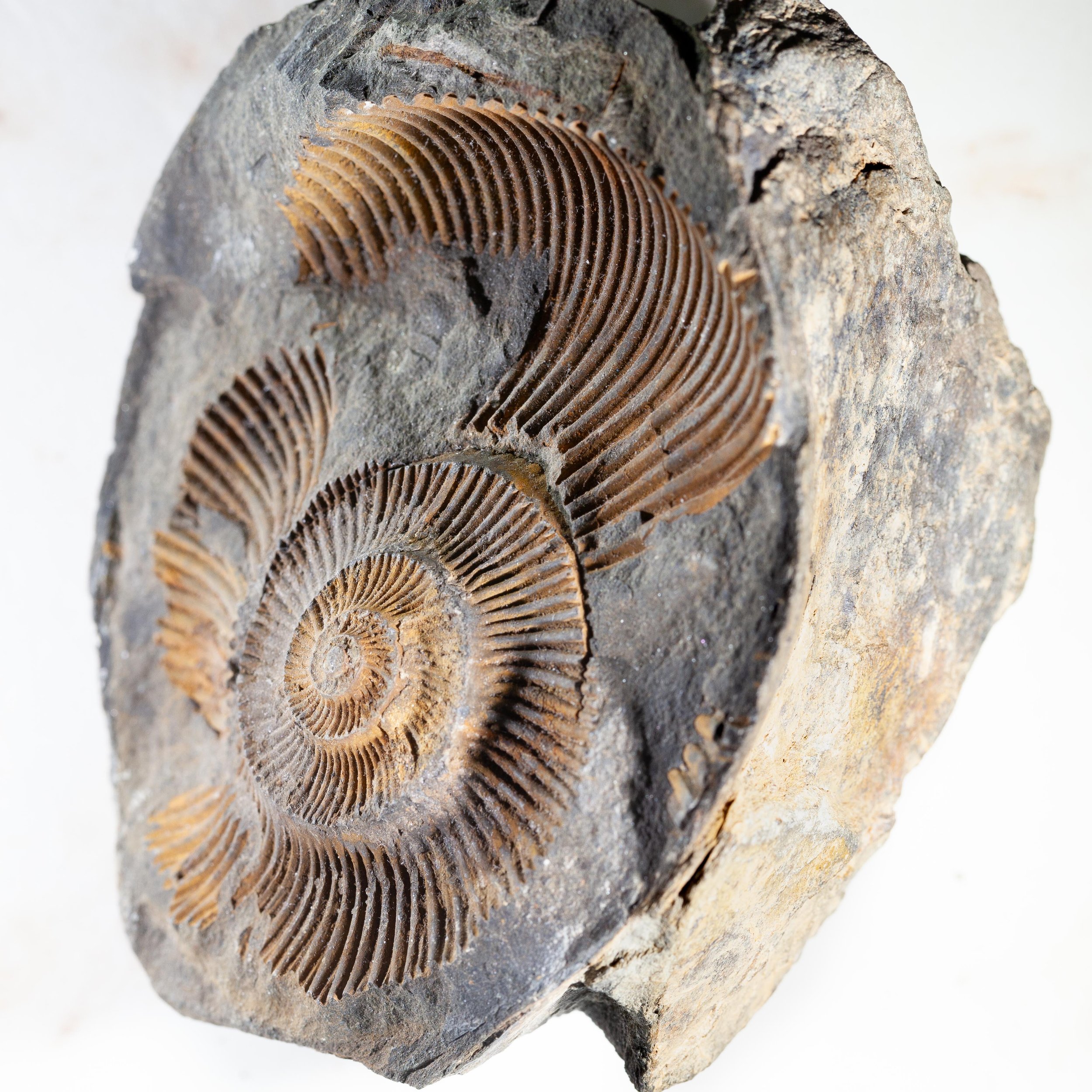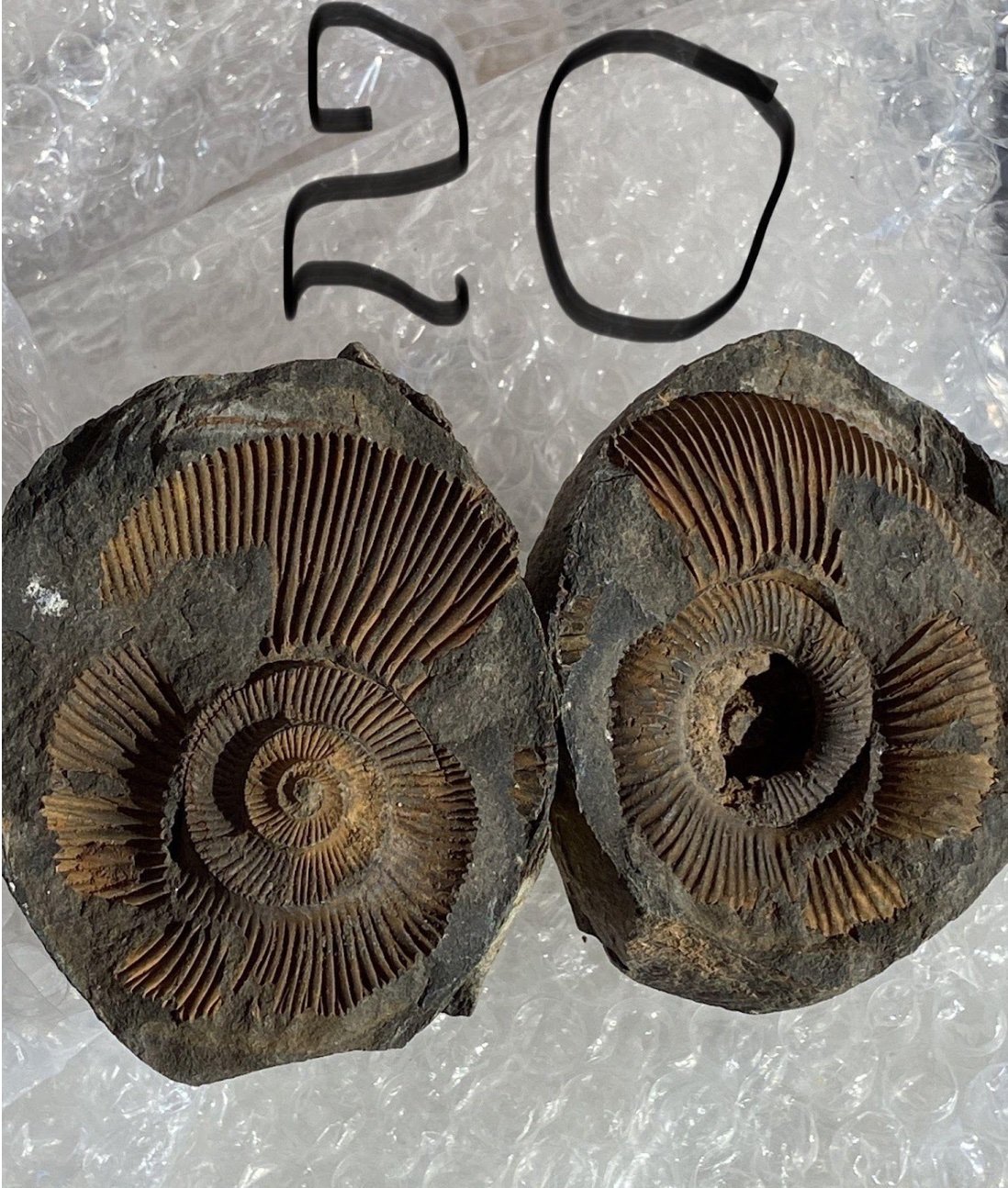Promicroceras planicosta
Vendor: Fossil Soup
SKU Number: SQ6727677
A Well preserved example of the ammonite species Promicroceras planicosta from the celebrated Charmouth / Lyme Regis locality in Dorset, South West England. This locality was made famous by Mary Anning, a victorian paleontologist, who discovered the fossilized remains of many large marine reptiles that are now on display in the Natural History Museum in London.
These ammonites are generally found in nodules of sedimentary rock on the foreshore at low tide. The nodules are broken open to reveal the fossil inside. After collection the rock is further abraded from the ammonite using pneumatic tools to reveal the whole fossil.
This 200 million year old early Jurassic (Lower Lias) age P. planicosta has undergone mineralization and the original shell was replaced by calcite during fossilization. The ammonite is fully 3 dimensional with well defined rib ornamentation. An acrylic stand is included.
Full dimensions are listed below.
Vendor: Fossil Soup
SKU Number: SQ6727677
A Well preserved example of the ammonite species Promicroceras planicosta from the celebrated Charmouth / Lyme Regis locality in Dorset, South West England. This locality was made famous by Mary Anning, a victorian paleontologist, who discovered the fossilized remains of many large marine reptiles that are now on display in the Natural History Museum in London.
These ammonites are generally found in nodules of sedimentary rock on the foreshore at low tide. The nodules are broken open to reveal the fossil inside. After collection the rock is further abraded from the ammonite using pneumatic tools to reveal the whole fossil.
This 200 million year old early Jurassic (Lower Lias) age P. planicosta has undergone mineralization and the original shell was replaced by calcite during fossilization. The ammonite is fully 3 dimensional with well defined rib ornamentation. An acrylic stand is included.
Full dimensions are listed below.
Vendor: Fossil Soup
SKU Number: SQ6727677
A Well preserved example of the ammonite species Promicroceras planicosta from the celebrated Charmouth / Lyme Regis locality in Dorset, South West England. This locality was made famous by Mary Anning, a victorian paleontologist, who discovered the fossilized remains of many large marine reptiles that are now on display in the Natural History Museum in London.
These ammonites are generally found in nodules of sedimentary rock on the foreshore at low tide. The nodules are broken open to reveal the fossil inside. After collection the rock is further abraded from the ammonite using pneumatic tools to reveal the whole fossil.
This 200 million year old early Jurassic (Lower Lias) age P. planicosta has undergone mineralization and the original shell was replaced by calcite during fossilization. The ammonite is fully 3 dimensional with well defined rib ornamentation. An acrylic stand is included.
Full dimensions are listed below.
Additional Information
Ammonites are a group of extinct marine mollusks that occupy the same class that includes octopuses, squids, and nautiluses.
The group Cephalopoda is divided into three subgroups: coleoids (including squids, octopuses and cuttlefishes), nautiloids (the nautiluses) and ammonites.
During their long history, ammonites survived three mass extinctions—most notably the Permian extinction, a global warming that was brought on by volcanic activity about 252 million years ago, and that killed 96 percent of the planet’s marine species. While many species of ammonites died out in that extinction event, scientists believe the survivors diversified explosively in the million years that followed. Ammonites hunted the planet’s seas until they were entirely wiped out by the same cataclysm that claimed the non-avian dinosaurs about 66 million years ago.
References:
Promicroceras
Order Ammonoidea
National Geographic Ammonte Facts


